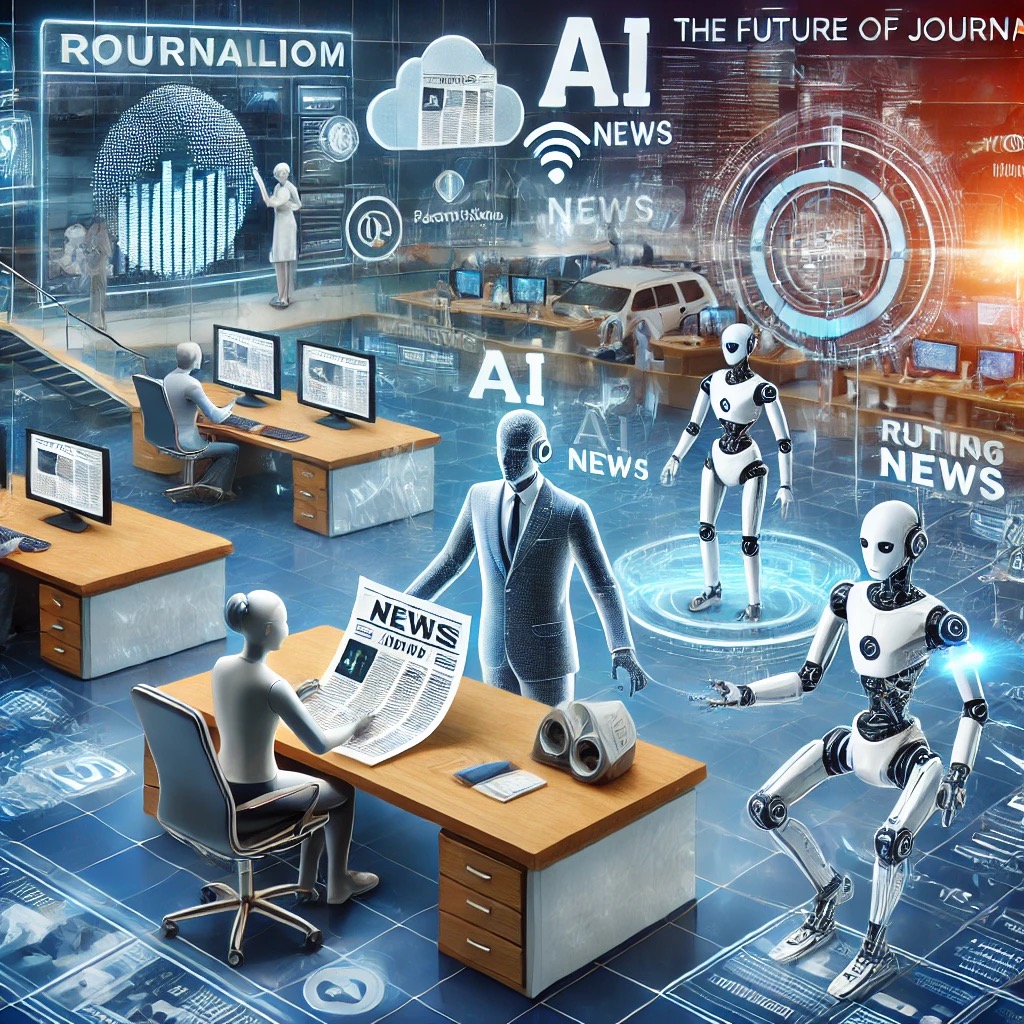The future of journalism is undergoing a profound transformation driven by advancements in artificial intelligence (AI) and automation. AI-generated news and automated reporting are reshaping how news is gathered, written, and distributed, offering both opportunities and challenges for the industry. Below is an exploration of the key trends, benefits, risks, and implications of AI in journalism.



1. The Rise of AI-Generated News
AI technologies are increasingly being used to produce news content, particularly for data-driven stories such as financial reports, sports updates, and weather forecasts. These systems can analyze large datasets, identify patterns, and generate coherent narratives in seconds.
How It Works
- Natural Language Generation (NLG) : Tools like GPT (Generative Pre-trained Transformer) and platforms such as Automated Insights’ Wordsmith convert structured data into readable text.
- Data Aggregation : AI algorithms pull information from multiple sources, including government databases, social media, and sensors, to create comprehensive reports.
- Real-Time Updates : AI systems can provide live updates on breaking news, ensuring audiences receive timely information.
Examples
- Reuters’ Lynx Insight : A tool that helps journalists analyze data and generate story ideas.
- Associated Press (AP) : Uses AI to automate earnings reports, freeing journalists to focus on more complex stories.
- Bloomberg’s Cyborg : Automates financial news stories based on market data.
2. Benefits of AI in Journalism
AI offers several advantages that enhance the efficiency, accuracy, and reach of journalism:
a. Increased Efficiency
- AI automates repetitive tasks, allowing journalists to focus on investigative reporting, storytelling, and analysis.
- Automated reporting reduces the time required to produce routine stories, enabling faster publication.
b. Scalability
- AI can generate thousands of localized news stories simultaneously, catering to niche audiences or underserved regions.
- For example, hyper-local news about community events or small-town sports can be automated.
c. Data-Driven Insights
- AI excels at analyzing vast amounts of data, uncovering trends, and identifying stories that might otherwise go unnoticed.
- Journalists can use AI tools to spot anomalies in datasets, such as corruption or environmental issues.
d. Cost Reduction
- Automation lowers operational costs by reducing the need for human labor in certain areas of reporting.
- Smaller news organizations can leverage AI to compete with larger outlets.
e. Personalization
- AI-powered algorithms tailor content to individual readers based on their preferences, increasing engagement and loyalty.
- News apps and websites can recommend articles, videos, or podcasts aligned with user interests.
3. Challenges and Risks
While AI brings significant benefits, it also introduces challenges that must be addressed to ensure ethical and responsible journalism.
a. Quality and Accuracy
- AI-generated content may lack nuance, context, or emotional depth, leading to oversimplified or misleading narratives.
- Errors in data interpretation can propagate misinformation if not carefully reviewed by humans.
b. Bias and Fairness
- AI systems inherit biases from their training data, which can skew reporting or reinforce stereotypes.
- Ensuring fairness and objectivity in AI-generated content requires ongoing monitoring and adjustment.
c. Job Displacement
- Automation threatens traditional journalism jobs, particularly in areas like copywriting and basic reporting.
- Journalists must adapt by acquiring new skills, such as data analysis and AI literacy.
d. Ethical Concerns
- The use of AI raises questions about transparency. Should readers know when a story is AI-generated?
- Deepfakes and synthetic media could blur the line between fact and fiction, undermining trust in journalism.
e. Over-Reliance on Technology
- Dependence on AI could lead to a loss of critical thinking and investigative rigor among journalists.
- Human oversight remains essential to verify facts, interpret complex issues, and uphold journalistic standards.
4. The Role of Human Journalists
Despite the rise of AI, human journalists remain indispensable. Their roles are evolving to complement AI capabilities:
a. Investigative Reporting
- Complex investigations require creativity, intuition, and empathy—qualities that AI lacks.
- Journalists can use AI as a tool to uncover leads but must rely on their expertise to pursue deeper truths.
b. Storytelling
- Humans excel at crafting compelling narratives that resonate emotionally with audiences.
- AI can assist with data collection, but storytelling remains a distinctly human skill.
c. Accountability
- Journalists play a crucial role in holding AI systems accountable, scrutinizing their outputs, and addressing potential biases.
5. Emerging Trends in AI Journalism
Several trends are shaping the future of AI in journalism:
a. Collaborative Journalism
- AI tools are increasingly seen as collaborators rather than replacements, empowering journalists to work smarter and faster.
- Platforms like Google’s Fact Check Explorer help verify claims and combat misinformation.
b. Voice and Visual Media
- AI is enhancing audio and video production, enabling automated voiceovers, video editing, and even virtual anchors.
- Examples include AI-generated news broadcasts and personalized podcasts.
c. Blockchain for Transparency
- Blockchain technology is being explored to track the origins of news stories, ensuring authenticity and combating fake news.
d. Augmented Reality (AR) and Virtual Reality (VR)
- AI-powered AR/VR experiences immerse audiences in stories, providing interactive and engaging ways to consume news.
6. Implications for Society
The integration of AI in journalism has broader societal implications:
a. Democratization of Information
- AI enables smaller organizations and independent journalists to produce high-quality content, leveling the playing field.
- However, this democratization also increases the risk of misinformation spreading through unverified sources.
b. Trust and Credibility
- Maintaining public trust is critical as AI becomes more prevalent. Newsrooms must prioritize transparency and accountability.
- Clear labeling of AI-generated content can help build credibility.
c. Media Literacy
- As AI-generated content becomes more common, audiences need to develop critical thinking skills to evaluate sources and detect bias.
7. Conclusion
The future of journalism lies in striking a balance between leveraging AI’s capabilities and preserving the core values of human journalism. While AI-generated news and automated reporting offer unprecedented efficiency and scalability, they cannot replace the creativity, empathy, and ethical judgment of human journalists. By embracing AI as a tool rather than a replacement, the journalism industry can adapt to the digital age while continuing to serve the public interest.
Ultimately, the success of AI in journalism depends on collaboration, transparency, and a commitment to upholding the principles of truth, fairness, and accountability. As technology evolves, so too must the practices and ethics of journalism to ensure it remains a trusted pillar of democracy.



